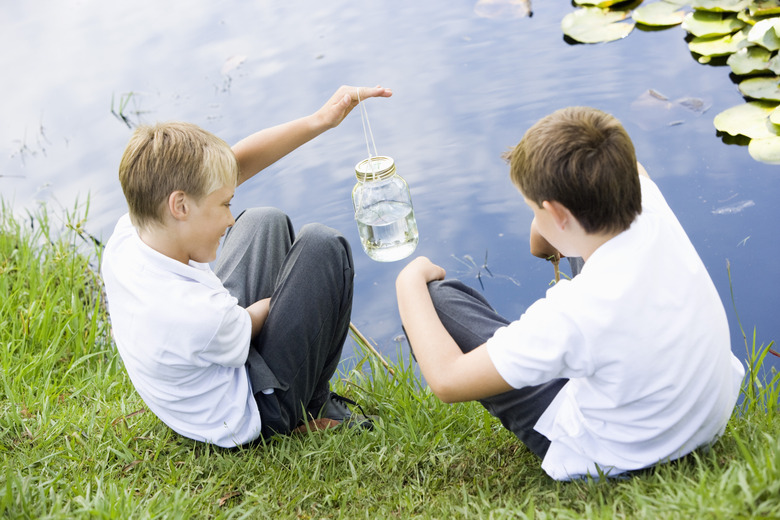Environmental Science Activities For Kids
Environmental science activities, whether done in school or at home, are a great way to engage kids. Environmental science activities are both fun and educational. The lessons kids can learn about the environment and our impact on it can be very powerful when demonstrated with hands-on projects.
Make Compost
Make Compost
Making compost is not only a great way to recycle your leftovers and provide yourself with rich organic material for your garden, but it's also a great way to teach children about how things break down into the earth.
Purchase a compost bin, or let making a bin be part of the project. Fill the bin with dried leaves, grass clippings, vegetable peels, newspaper and other materials that break down easily. The kids can observe over time how things break down.
In contrast, fill another bin with things like plastic wrappings, unused disposable diapers, rubber bands and paper clips. Have kids compare the breakdown of the organic materials to that of the non-organic materials, and discuss how this might affect the earth in a landfill.
This is a long-term project for elementary students to help them observe and understand how the earth can recycle organic matter, and the importance of humans recycling non-organic matter.
Make a Biodome
Make a Biodome
Late elementary- and middle-school students will enjoy creating their own biodome, and they'll learn a lot from observing it over months. A biodome can also be used for a science fair project to illustrate the water cycle.
The main requirement is a glass or clear plastic container, such as a soda bottle or fish tank. Place a layer of gravel at the bottom, then add potting soil and plants. Add water enough to moisten the soil, and cover the entire container tightly. Use glue, plastic wrap or tape to seal the sides of the cover to ensure it is airtight. The water trapped inside will continually evaporate and rain back down on the plants in the biodome so that the tiny ecosystem can sustain itself.
Check for Acid Rain
Check for Acid Rain
Middle-school and high-school students enjoy the investigative part of science. They can become nature detectives in their own local area and check for acid rain. The activity begins with collecting and labeling samples of water and soil from around town.
The random samples can be stored in baggies or sterilized baby food jars, with the location clearly marked on them. Kids can compare data, using pH testing strips for liquid sold in drugstores or soil-testing kits available at garden centers, and analyze whether acid rain is a problem in the area.
Study an Ecosystem
Study an Ecosystem
A long-term study of a natural ecosystem can be as simple or in-depth as you desire, and it can be custom-designed for any age group. Choose a safe location with your kids, such as a pond, swamp, garden, woodland or nature preserve, and bring the children there to visit at least one day a week for a few months.
Children can keep a field journal in which they keep notes of their observations. A good field guide will help them to identify the plants, insects, birds and animals that might inhabit the ecosystem. Some fun projects might involve testing the soil or water for acidity or pollutants, making plaster casts of animal tracks, digging and collecting fossils, sketching or taking photographs to create a visual file or display, or creating their own web page.
Cite This Article
MLA
Wright, Mackenzie. "Environmental Science Activities For Kids" sciencing.com, https://www.sciencing.com/environmental-science-activities-kids-5925046/. 24 April 2017.
APA
Wright, Mackenzie. (2017, April 24). Environmental Science Activities For Kids. sciencing.com. Retrieved from https://www.sciencing.com/environmental-science-activities-kids-5925046/
Chicago
Wright, Mackenzie. Environmental Science Activities For Kids last modified August 30, 2022. https://www.sciencing.com/environmental-science-activities-kids-5925046/
